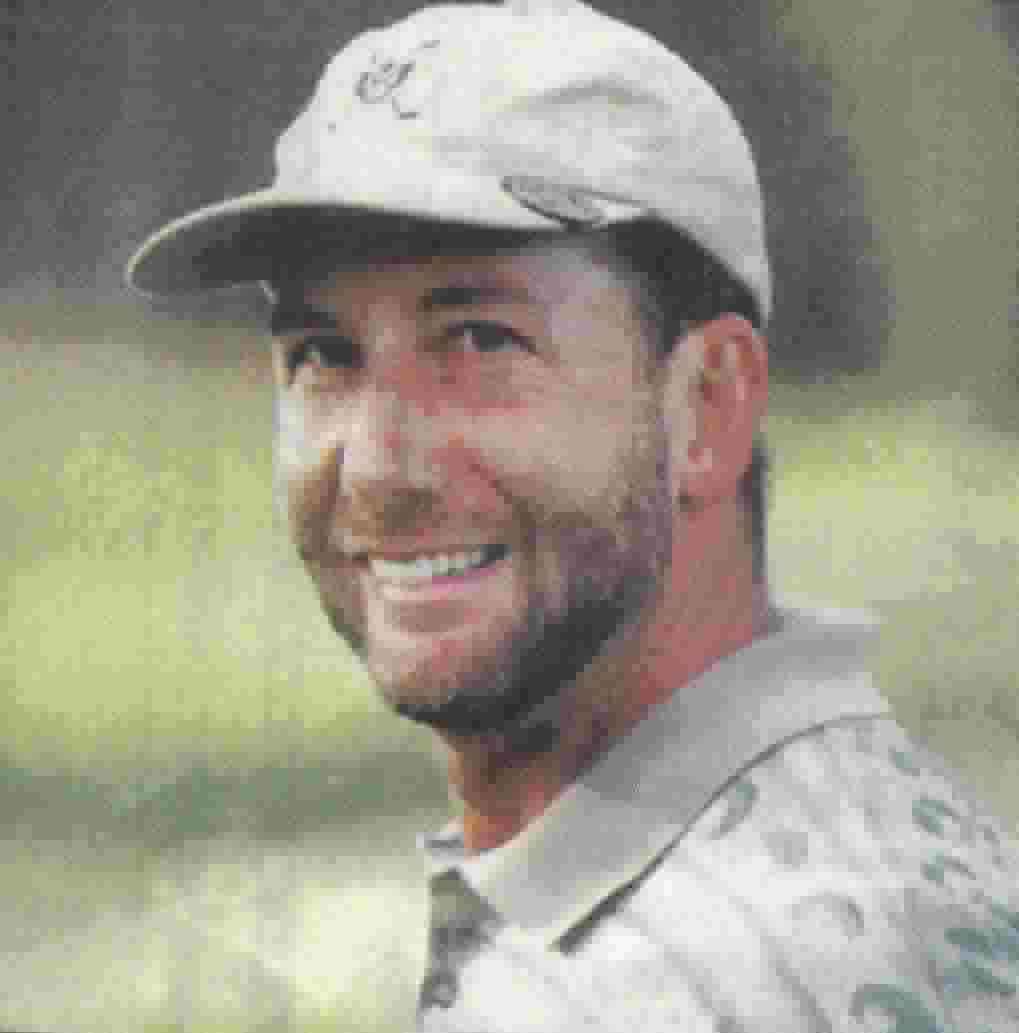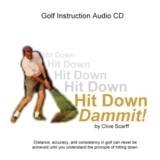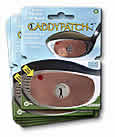Golf Statistics Part 2: Statistical Analysis
of the Average Golfer
Read
other Parts from the
Technology & Distance
series and Short Game
series here, Archives.
Email
me if you'd if there's anything you'd like to see discussed
or analyzed in
the next or future
newsletters. Now
on to this week's
topic.
II.
Dr. L.J. Riccio,
PhD did an
analysis of "average
golfers"
Although
much is known about
the statistical profile
of professional golfers,
little has been published
on the play of other
golfers. Riccio's 1990
paper used data from
over
100 golfers ranging
in ability from Jack
Nicklaus to a 35 handicapper.
The analysis was designed
to determine which
aspects of play separates
the average players
from the top amateurs.
He
found that some
specific statistics
were good predictors
of score. For
example, the number
of pars made could
be used to accurately
predict score,
using the equation,
SCORE = 102.6
- 2.7 X #pars.
If a player typically
makes 7 pars each
round, his/her
likely average
score would be
102.6 - 2.7 X
7 = 83.7.
Take
a look at how
many pars you
usually make in
a round (analyze
your last 5 rounds).
What does the
above formula
predict for your
average score?
Is it a good predictor?
Another
good predictor
is greens in regulation,
GIR. The formula
Riccio discovered
for GIR is SCORE
= 95.1 - 2.0 X
GIR. If you are
an excellent ball
striker and happen
to hit on average
15 greens per
round, then your
likely average
score would be
95.1 - 2.0 X 15
= 65.1. Yes, 65!
The pros don't
hit on average
15 greens per
round.
Below
is a table which
summarizes some
of the statistics
that Riccio investigated.
Where do you fit
in with your game?
| |
AVERAGE
SCORE |
Relationship |
| CATEGORY |
71 |
75 |
79 |
81 |
85 |
89 |
91 |
95 |
99 |
|
| GIR |
12 |
10 |
8 |
7 |
5 |
3 |
2 |
0 |
0 |
Strong |
| % Fairways |
81 |
71 |
61 |
56 |
46 |
36 |
31 |
21 |
11 |
Weak |
| Iron Accuracy |
80 |
68 |
53 |
47 |
33 |
20 |
13 |
0 |
0 |
Good |
| Putts per
Round |
29.0 |
30.3 |
31.7 |
32.3 |
33.7 |
35.0 |
35.7 |
37.0 |
38.3 |
Weak |
| Pitch/Chip/Sand |
5.1 |
7.4 |
9.8 |
10.9 |
13.3 |
15.6 |
16.8 |
19.2 |
21.5 |
Strong |
| Birdies |
3.2 |
2.4 |
1.8 |
1.5 |
0.8 |
0.1 |
0 |
0 |
0 |
Strong |
| Pars |
11.8 |
10.3 |
8.8 |
8.1 |
6.6 |
5.1 |
4.3 |
2.8 |
1.3 |
Strong |
The
last column indicates
the strength of
the statistical
relationship between
score and the
statistic. A "Strong"
relationship is
one that predicts
quite well one
statisitic given
the other (i.e.
the SCORE given
the GIR). A "Weak"
relationship does
not predict as
well.
As
a comparison,
keep similar statistics
for yourself over
the next 5 rounds
(10 rounds would
be better) and
see how your statistics
are related to
the scores you
shoot.
Let's
say your scoring
average is 89.
You have a goal
to get down to
breaking 80, thus
a scoring average
of 79. Compared
to overall average
golfer statistics,
you need to improve
by:
†
increasing GIR
from 3 to 8 (267%
increase)
† increasing
Iron Accuracy
from 20 to 53% (265%
increase)
† reducing
Putts per Round
from
35.0 to 31.7
(9.5% decrease)
† reducing
Pitch/Chip/Sand
from 15.6 to 9.8 (37% decrease)
|
|

Learn
your
perfect
swing
while
attached
to the "Dream
Swing."
|
Your
ball striking
and thus swing
would need to
improve immensely
to reach your
goal. Imagine
how much less
improvement is
necessary with
the short game
to realize lower
scores. I recommend
you buying Dave
Pelz's book
to help out.
I've
also done my own
statistical study
on amateur golfer
statistics. Using
a similar range
of handicaps as
Riccio, I've analyzed
scores from my
own golf club's
tournaments. Click
on the highlighted
link, Fair
Handicap Analysis.
From www.usga.org
, they have a listing
of Men's Handicap
Indexes and percentages
in each category.
Even though this
would not include
all golfers, it's
a pretty good representative
sample.
70% of men have
indices between
7 and 23, corresponding
to scores of about
77 to 93, with an
average of 85 (assuming
a course rating
of about 70).
Next
time, my newsletter
topic will continue
with statistics
in golf. Email
me if you'd if
there's anything
you'd like to
see discussed
or analyzed.
A list of resources that have been used to produce this newsletter
can be found on my
website here.
The focus
of my site
is to utilize science
and math to lower
your score. New technology
is one
way to achieve this,
but to be honest,
the technology is
one small piece of
the puzzle.
To actually improve significantly,
we all need to:
1. Improve our swings using CD
Interactive, Hit
Down Dammit!
2. Learn how to swing simpler
like the Iron Byron
with the great coffee
table book, Swing
Machine Golf!
3. Improve our physical fitness
and strength.
The
Golf Trainer Power
Performance Programô
4. Improve our mental games.
Golf
Mind Software
5. Improve our Probable
Golf games.
Learn how to make better
choices on the course
through knowing how
shot patterns and reading
the elements and course
better.
Click on the links above to
take a look at
ways that I personally
use myself and
recommend you try
as well.
Hope
I provided some useful
ways for to become
better prepared for
you best golf season
ever.
Ken Tannar
If you'd like to opt out of this newsletter, send
me an email with the subject "opt
out, please"
|












